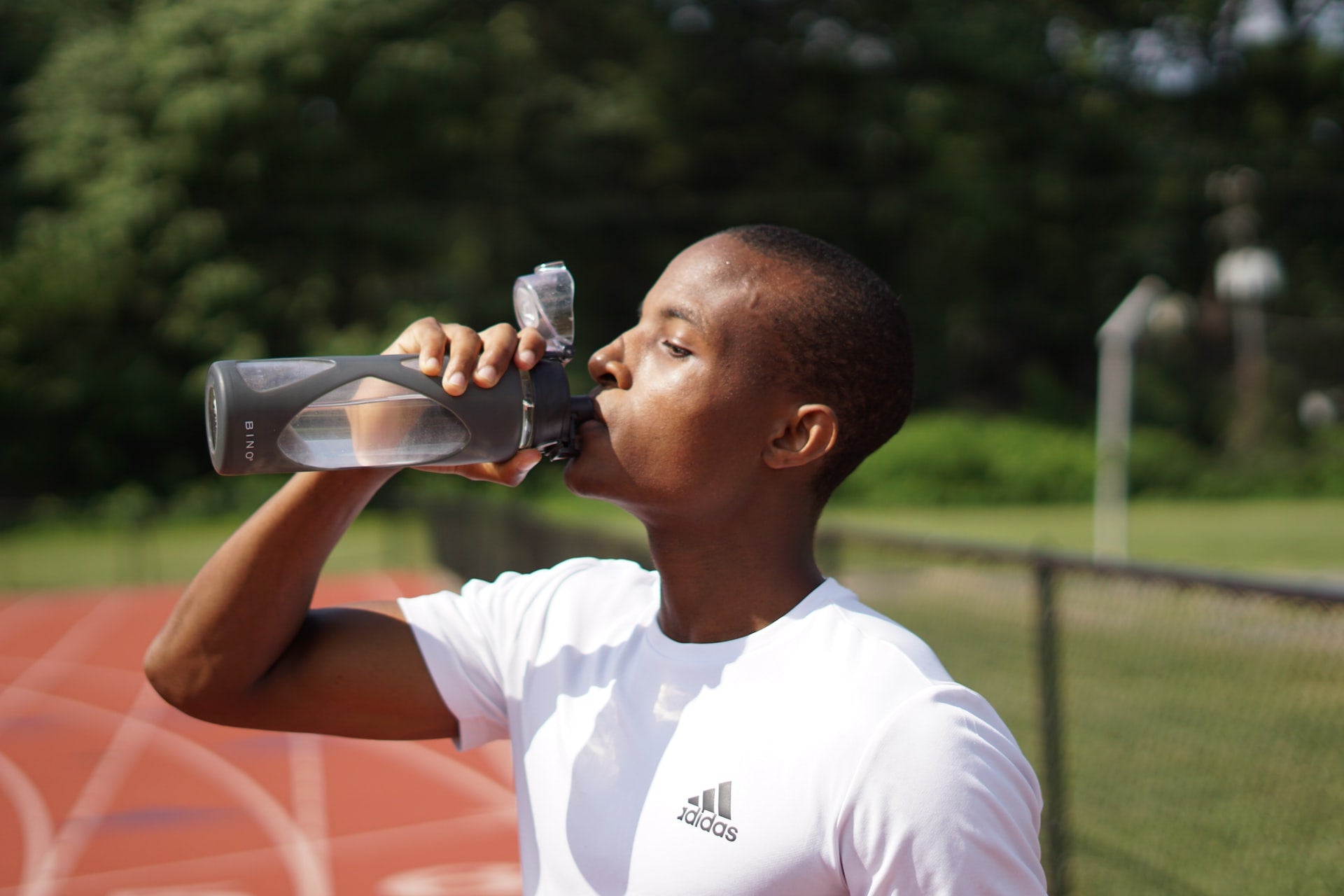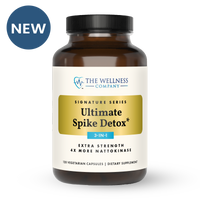Sweating the Details: Hydration Strategies for Optimal Health and Performance

Did you know that on average, water accounts for 60% of our bodyweight? We are quite literally made of the stuff. Why? It turns out that all the chemical reactions humming along inside of us – from those required to build muscle to those involved in eliminating toxins – depend on this aqueous medium. When we don’t get enough water, bad things happen.
If you’ve ever experienced the fatigue, brain fog and nausea associated with true dehydration, you’ll appreciate first-hand the importance of staying hydrated. Research confirms what we all intuitively understand: dehydration impairs performance [1] and compromises our health [2].
This begs a practical question: how much water do we really need on a daily basis, and how do those requirements change with exercise?
Neural Thirst Circuits Do Much of the Work
Thanks to a brain center called the lamina terminalis, we aren’t often forced to consider our hydration strategies in much depth. This region is constantly monitoring the ratio of water to electrolytes in our blood, triggering the feeling of thirst when water loss crosses a certain threshold [3].
You Might Not Be Drinking Enough
The good news is that according to large surveys, most people successfully meet their water intake needs (which on average are 13 cups per day for men, and 9 cups per day for women [4]). But if you’re an avid exerciser, the story is a bit different.
Research shows that while our neural thirst circuits work well at rest, they don’t function optimally during exercise. Indeed, exercisers tend to significantly under-consume water, replenishing only half the fluid they lose through sweat [5].
How Much More Should You Drink When You Exercise?
The bottom line is that you need to replace the water you’re losing. Precisely how to do that is complicated by the fact that water loss during exercise depends on temperature, intensity, and your natural propensity to sweat, which is different from person to person [6]. No generic recommendation is foolproof.
According to Precision Nutrition, however, on days you’re exercising, three liters of water is a good rule of thumb [7]. Drink one liter before and during your session, another liter after, and a third liter throughout the day with meals.
If you want to get technical, you could also track bodyweight during the session. If you lose more than 2% bodyweight (e.g., a 150 lbs adult losing 3 lbs), you’ve reached dehydration status and need to get some fluid in you.
Another method of monitoring hydration – and probably the most practical – is to track urine color. Anything darker than pale yellow means you should hydrate.
What About Coffee, Tea, and Other Caffeinated Drinks?
You've probably been told that coffee and tea are actually dehydrating, and don't count towards your daily water intake. While there's a plausible mechanism behind this notion, hydration experts feel this narrative is overblown. Yes, caffeine is a diuretic, meaning it promotes the kidneys to flush extra sodium and water from the body.
But when researchers in the UK compared coffee drinkers to water drinkers in a 2014 crossover study, they found no significant differences in any objective markers of hydration [8]. The researchers concluded that coffee does not pose any detrimental effects to fluid balance.
A Caveat on Overhydration
It is possible (though very rare) to over-hydrate, throwing off the sodium content in your blood to such a degree that a condition called hyponatremia results. This can have serious side-effects on neurological function, and can ultimately result in death [8]. This phenomenon has been documented mostly in elite endurance athletes, and tragically led to the death of a Boston Marathon participant in 2002 [9].
In addition to ensuring appropriate water intake, the risk of hyponatremia can be mitigated by consuming adequate amounts of salt before, during, and after exercise. It’s not uncommon to lose a gram of salt per hour through sweat while exercising under hot and dry conditions. Many endurance athletes utilize salt tablets and electrolyte-enriched drinks to ensure their electrolyte levels remain adequate.
Bottomline
When it comes to hydration, most people don’t need to sweat it, as their thirst signals will do most of the work. But if you’re an exerciser, extra care is required. Follow the advice above, and you can rest assured you’ll feel great, and perform at your best.
Video: What would happen if you didn't drink water? By Mia Nacamulli
References
[1] Armstrong, L. E. (2007). Assessing hydration status: the elusive gold standard. Journal of the American College of Nutrition, 26(sup5), 575S-584S.
[2] Kavouras, S. A. (2019). Hydration, dehydration, underhydration, optimal hydration: are we barking up the wrong tree?. European Journal of Nutrition, 58(2), 471-473.
[3] Zimmerman CA, Leib DE, Knight ZA. Neural circuits underlying thirst and fluid homeostasis. Nat Rev Neurosci. 2017 Aug;18(8):459–69.
[4] The National Academy of Sciences. Dietary References Intakes for Water, Potassium, Sodium, Chloride, and Sulfate. https://www.nap.edu/read/10925/chapter/6#102
[5] Kenefick RW. Drinking Strategies: Planned Drinking Versus Drinking to Thirst. Sports Med. 2018 Mar;48(Suppl 1):31–7.
[6] Osterberg, K. L., Horswill, C. A., & Baker, L. B. (2009). Pregame urine specific gravity and fluid intake by National Basketball Association players during competition. Journal of athletic training, 44(1), 53-57.
[7] https://www.precisionnutrition.com/how-much-water-should-i-drink
[8] Killer, S. C., Blannin, A. K., & Jeukendrup, A. E. (2014). No evidence of dehydration with moderate daily coffee intake: a counterbalanced cross-over study in a free-living population. PloS one, 9(1), e84154.
[9] Almond, C. S., Shin, A. Y., Fortescue, E. B., Mannix, R. C., Wypij, D., Binstadt, B. A., ... & Greenes, D. S. (2005). Hyponatremia among runners in the Boston Marathon. New England Journal of Medicine, 352(15), 1550-1556.
[10] Smith, S. (2002). Marathon runner’s death linked to excessive fluid intake. New York Times, 13.














